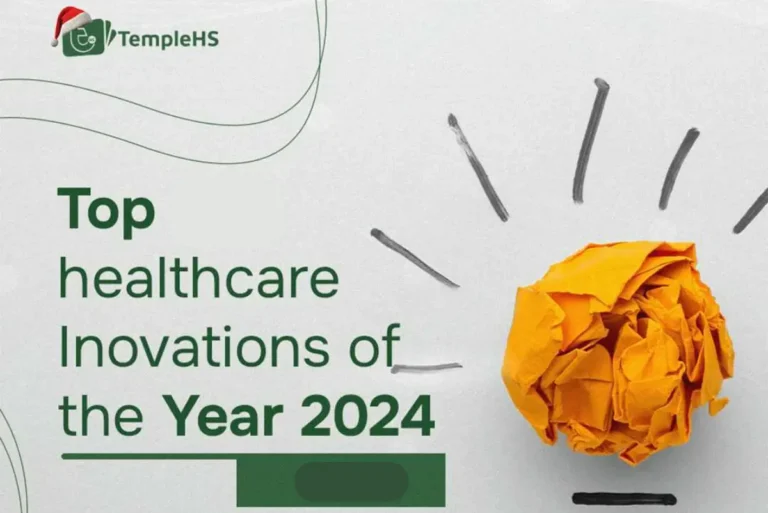Medical advancements continue to transform healthcare, offering new solutions to age-old challenges and improving the quality of life for millions. In 2024, groundbreaking innovations are shaping the future of medicine, from advanced diagnostic tools to life-saving treatments. These developments not only address critical healthcare needs but also push the boundaries of what’s possible, ushering in a new era of precision, accessibility, and efficiency.
This post highlights the top 10 medical innovations of 2024, showcasing how they are revolutionizing patient care and redefining medical possibilities.
Top 10 Medical Innovations of 2024
10. Tracking Gazes to Assist with Surgery
Researchers at the University Health Network have developed an innovative gaze-tracking system tailored for surgical environments. By collecting gaze data and converting it into video displays on surgical monitors, this cost-effective solution addresses the limitations of integrating traditional gaze-tracking systems into operating rooms. With no existing vendors providing integrated eye-tracking hardware for operating room equipment, this technology has the potential to revolutionise surgical precision and training while reducing costs.
9. Nanocomposite Seaweed Sensors for Health Monitoring
The University of Sussex has developed a breakthrough in wearable technology by integrating nanomaterials with seaweed to create sensors that track blood pressure, pulse, breathing, and joint movement in real-time. These sustainable and highly accurate sensors outperform many advanced alternatives, offering a cost-effective and environmentally friendly option for patient health monitoring. Their potential extends to enhancing preventive healthcare and improving patient outcomes through precise, non-invasive monitoring.
8. A Non-Invasive Platform Using miRNA Markers to Prevent Stillbirths
Researchers at Imperial College London have introduced a non-invasive testing platform to identify small-for-gestational-age (SGA) pregnancies, which are at higher risk of stillbirths. By detecting specific miRNA biomarkers in maternal blood, this technology enables early and accurate identification of SGA risks, facilitating timely interventions. Its integration into routine prenatal screenings provides an affordable and effective solution to improve pregnancy outcomes globally.
7. Machine Learning for Early Detection of Neurodegenerative Diseases
Western University researchers have developed a machine learning algorithm capable of detecting early signs of neurodegenerative diseases by analysing subtle changes in the brain. This innovative approach reduces reliance on radioactive tracers, making it safer and more efficient. Early detection enables healthcare professionals to implement interventions earlier, potentially mitigating disease progression and reducing costs for both patients and healthcare systems.
6. Red Blood Cell-Derived Vesicles for Targeted Drug Delivery
A team at Imperial College London has devised a novel drug delivery platform using red blood cell-derived vesicles (RBCVs). These vesicles encapsulate thrombolytic and antiplatelet agents, offering enhanced drug stability and controlled release for treating thrombotic conditions like strokes and pulmonary embolisms. By addressing the limitations of existing treatments, this innovation minimises bleeding risks while optimising therapeutic outcomes.
5. Real-Time Detection of Health Conditions with Sweat Stickers
At the University of Hawaii, researchers have developed a multi-layered ‘sweat sticker’ using rapid 3D fabrication technology. This wearable device analyses specific health conditions by providing real-time data in a cost-effective and non-invasive manner. With applications across all age groups, this innovation bridges the gap between wearable technology and personalised healthcare, offering an affordable solution for chronic condition management.
4. Personalised AI-Informed Orthopaedic Insoles for Diabetes Patients
Scientists at Pontificia Universidad Javeriana created Diapetics®, a telemedicine-based platform that leverages AI to design and prescribe custom orthopaedic insoles for diabetes patients. By addressing issues like diabetic foot ulcers and reducing amputation risks, Diapetics® integrates data seamlessly to produce tailored solutions. This advancement represents a significant step in reducing diabetes-related complications and improving patient mobility and quality of life.
3. An Anti-Biofilm Agent to Prevent Antimicrobial Resistance
Researchers at Georgia State University have developed compounds derived from the Gesho plant that exhibit anti-biofilm activity. These compounds can be used as surface disinfectants, topical treatments, or therapies for chronic infections like wounds and urinary tract infections. By targeting microbial biofilms directly, this technology helps combat antimicrobial resistance, a growing global health crisis, and reduces the incidence of persistent infections.
2. Novel Antibiotics for Gram-Positive Bacteria
The University of California, Irvine has created a new class of teixobactin analogs, promising effective treatments for MRSA, pneumonia, and tuberculosis. This innovation addresses the rising challenge of antibiotic resistance, which burdens healthcare systems with significant costs. By offering a novel treatment modality, these antibiotics pave the way for reducing prolonged hospital stays and improving patient outcomes.
1. Enzyme-Based Method for Treating Biofilm-Associated Infections
Texas Tech University System researchers have pioneered an enzyme-based method to dismantle biofilm-associated infections (BAIs) that contribute to antibiotic resistance. This approach targets the Extra Polymeric Substances (EPS) within biofilms, enhancing the efficacy of antibiotics without the need for tissue removal. This innovation offers a transformative solution for chronic wound care, reducing patient discomfort and healthcare costs, and addressing a critical challenge in modern medicine.
Conclusion
The top medical innovations of 2024 showcase the remarkable progress being made in healthcare, driven by technology, research, and a commitment to improving lives. These advancements not only offer solutions to longstanding medical challenges but also pave the way for a healthier future. As these innovations become more accessible, they will undoubtedly change how we approach medicine, offering transformative benefits for patients and practitioners alike.
Source: Healthcare innovations 2024, identified by the global R&D community



